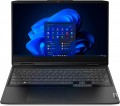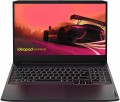Refresh rate
The frame rate supported by the laptop screen. In fact, in this case we are talking about the maximum frequency; the actual frame rate may be lower than this value, depending on the content being displayed — but not higher.
Theoretically, the higher the frame rate, the smoother the movement on the screen will look, the less moving objects will be blurred. In fact, the situation is such that even in relatively modest modern laptops,
60 Hz matrices are installed — in general, this is quite enough for the human eye, since a further increase in speed (
90 Hz and higher) does not significantly improve the visible “picture”. However, in high-end gaming and multimedia models designed for demanding users, higher values —
120 Hz,
144 Hz,
165 Hz and even
higher, namely
240 Hz and
300 Hz.
Model
The specific model of the processor installed in the laptop, or rather, the processor index within its series (see above). Knowing the full name of the processor (series and model), you can find detailed information on it (up to practical reviews) and clarify its capabilities.
Code name
The code name for CPU installed in the laptop.
This parameter characterizes, first of all, the generation to which the processor belongs, and the microarchitecture used in it. At the same time, chips with different code names can belong to the same microarchitecture/generation; in such cases, they differ in other parameters - general positioning, belonging to certain series (see above), the presence / absence of certain specific functions, etc.
Nowadays, the following code names are relevant in Intel processors:
Coffee Lake,
Comet Lake,
Ice Lake,
Tiger Lake,
Jasper Lake,
Alder Lake,
Raptor Lake (13th Gen),
Alder Lake-N,
Raptor Lake (14th Gen),
Meteor Lake (Series 1),
Raptor Lake (Series 1),
Lunar Lake (Series 2),
Arrow Lake (Series 2).
For AMD, the list looks like this:
Zen 2 Renoir,
Zen 2 Lucienne,
Zen 3 Cezanne,
Zen 3 Barcelo,
Zen 3+ Rembrandt,
Zen 3+ Rembrandt R,
Zen 2 Mendocino,
Zen 3 Barcelo R,
Zen 4 Dragon Range,
Zen 4 Phoenix
Zen 4 Hawk Point,
Zen 5 Strix Point,
Zen 5 Strix Halo.
Detailed data on different code names can be found in special sources.
TurboBoost / TurboCore frequency
Processor clock speed achieved in TurboBoost or TurboCore "overclocking" mode.
Turbo Boost and Turbo Core technologies are used by different manufacturers (Intel and AMD, respectively), but they have the same principle of operation: load distribution from more loaded processor cores to less loaded ones to improve performance. The "overclocking" mode is characterized by an increased clock frequency, and it is indicated in this case.
For more information about clock speed in general, see the relevant paragraph above.
3DMark06
The result shown by the laptop processor in 3DMark06.
This test is primarily focused on testing performance in games — in particular, the ability of the processor to process advanced graphics and artificial intelligence elements. Test scores are reported as scores; the higher this number, the higher the performance of the tested chip. Good 3DMark06 results are especially important for
gaming laptops.
Passmark CPU Mark
The result shown by the laptop processor in the Passmark CPU Mark test.
Passmark CPU Mark is a comprehensive test that is more detailed and reliable than the popular 3DMark06 (see above). It checks not only the gaming capabilities of the CPU, but also its performance in other modes, based on which it displays the overall score; this score can be used to fairly reliably evaluate the processor as a whole (the more points, the higher the performance).
SuperPI 1M
The result shown by the laptop processor in the SuperPI 1M test.
The essence of this test is to calculate the number "pi" to the millionth decimal place. The time spent on this calculation is the final result. Accordingly, the more powerful the processor, the smaller the result will be (this SuperPI 1M is fundamentally different from many other tests).
RAM
The amount of random access memory (RAM or RAM) actually installed in the laptop.
The amount of RAM is one of the most important indicators characterizing the overall flow Rate of the system. The more RAM installed in a laptop, the better it will cope with “heavy” resource-intensive programs, and the more tasks can be performed on it simultaneously without “brakes” and failures.
Today
, 4 GB of RAM is considered the minimum required. A capacity of
8 GB is usually enough for comfortable household use and simple games,
16 GB and
32 GB are enough for running resource-intensive applications and confidently launching modern games. And in advanced gaming and professional laptops there are also larger amounts of RAM -
64 GB or even more.
Note that many laptop models allow you to increase the available amount of RAM; For more details, see “Maximum installed volume”.
RAM type
Laptops mainly use different variants of DDR (so-called double data transfer memory). Here is a list of common types of such memory:
— DDR3. Third generation DDR RAM. Outperforms outdated DDR2 in terms of speed and power efficiency. However, it is also outdated against the background of the fourth version and new items - DDR5.
— DDR3L. A modification of DDR3 memory that supports operation at a reduced voltage - 1.35 V instead of 1.5 V (Low Voltage - hence the index L). Lower voltage contributes to both lower power consumption and better performance. Note that conventional DDR3 memory cannot be installed in such a slot, while the reverse option is quite possible.
—
DDR4. A memory standard released in 2014. Introduced further improvements in speed (up to 25.6 GB / s in the future) and energy efficiency. The most popular among laptops of recent years of release.
—
DDR5. The procession of the fifth generation of the DDR standard began at the turn of 2020-2021. It provides for approximately a twofold increase in memory subsystem performance and increased bandwidth compared to DDR4. Instead of a single 64-bit data channel, DDR5 uses a pair of independent 32-bit channels that work with 16-byte packets and allow 64 bytes of information to be delivered per clock on each channel. New memory modules require a voltage of 1.1 V, and the maximum volume of one DDR5 bar can rea
...ch an impressive 128 GB.
It is worth noting that different types of RAM are not interchangeable.
Some laptops have LPDDR4, LPDDR4X, LPDDR5, LPDDR5X RAM. It was developed by a specialist for mobile devices and is non-expandable, since the corresponding memory modules are built directly into the motherboard. The use of "RAM" standards LPDDR is determined by the achievement of an optimal balance between the performance of the laptop, its size and battery life.
